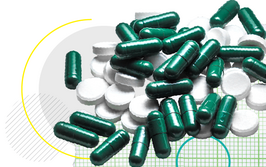
The Long Run
Quang Nguyen, MD, Gagan Sawhney, MD, and Janet Serle, MD, talk about safety and tolerability of VYZULTA®
sponsored by Bausch + Lomb
Download article pdf
VYZULTA® (latanoprostene bunod ophthalmic solution) 0.024% is indicated for the reduction of intraocular pressure in patients with open-angle glaucoma or ocular hypertension.
Why is a drug’s discontinuation rate important?
Quang Nguyen: Continuing with prescribed medication is a key challenge for any glaucoma patient, as it is in any chronic disease. Some medications successfully lower the IOP, but patients cannot tolerate the side effects, such as red eyes, burning or stinging. Patients are expected to be on these medications for a long time, but if the side effects are too much for them, they may give up after just a few weeks. In clinical trials, VYZULTA had a discontinuation rate of less than 1 percent due to ocular adverse events (1).
How can simplifying the glaucoma treatment regimen make a difference to patients’ outcomes?
Gagan Sawhney: One of the reasons why patients’ disease progresses is poor compliance. Patients have trouble keeping up with multiple doses and medications. The more times you have to take a medication – and the more medications you have to take – the more potential there is for compliance to reduce. What I love about VYZULTA is that you have a dual mechanism of action and the potential for up to that nine point reduction, which is often significant enough to keep patients on one drop, once a day. Keeping the dosage regimen simple and efficacy high can help to reduce the risk of disease progression (2,3) and, as we know in glaucoma, every millimeter of mercury matters (4).
What impact does it have on patient visits?
Gagan Sawhney: When patients are compliant, their condition is more likely to be stable and they are less likely to suffer visual field loss (2). Another factor in progression is appointment frequency. It can be hard for patients to keep up with visits. In the COVID-19 era especially, we want to decrease the number of visits patients make to the office and decrease their exposure to the virus – and each other. If we can find a way to do this while keeping pressure controlled, it will be a win-win for everybody.
Do you factor in patient tolerability when prescribing IOP-lowering medication?
Quang Nguyen: It is very important. In my approach: monotherapy, if I choose a drug and the patient tolerates it well, it is a factor in their adherence to it.
Gagan Sawhney: Of course! We have to consider not only if the eye drop is working, but if the patient is tolerating the eye drop. Fortunately, in my experience VYZULTA is well tolerated, and most of my patients have not experienced hyperemia.
Janet Serle: VYZULTA is a very efficacious agent, which greatly enhances outflow. It has excellent tolerability, as evidenced by the low discontinuation rate of 0.6 percent due to ocular adverse events in clinical trials. In my opinion, VYZULTA addresses challenges physicians and patients encounter with topical IOP-lowering therapies.
Quang Nguyan, Gagan Sawhney and Janet Serle are consultants of Bausch + Lomb.
IMPORTANT SAFETY INFORMATION
- Increased pigmentation of the iris and periorbital tissue (eyelid) can occur. Iris pigmentation is likely to be permanent
- Gradual changes to eyelashes, including increased length, increased thickness, and number of eyelashes, may occur. These changes are usually reversible upon treatment discontinuation
- Use with caution in patients with a history of intraocular inflammation (iritis/uveitis). VYZULTA should generally not be used in patients with active intraocular inflammation
- Macular edema, including cystoid macular edema, has been reported during treatment with prostaglandin analogs. Use with caution in aphakic patients, in pseudophakic patients with a torn posterior lens capsule, or in patients with known risk factors for macular edema
- There have been reports of bacterial keratitis associated with the use of multiple-dose containers of topical ophthalmic products that were inadvertently contaminated by patients
- Contact lenses should be removed prior to the administration of VYZULTA and may be reinserted 15 minutes after administration
- Most common ocular adverse reactions with incidence ≥2% are conjunctival hyperemia (6%), eye irritation (4%), eye pain (3%), and instillation site pain (2%)
Click here for full Prescribing Information
You are encouraged to report negative side effects of prescription drugs to the FDA. Visit www.fda.gov/medwatch or call 1-800-FDA-1088
Find out more:https://www.vyzultahcp.com/

VYZULTA and the V design are trademarks of Bausch & Lomb Incorporated or its affiliates
©2020 Bausch & Lomb Incorporated or its affiliates. All rights reserved – VYZ.0157.USA.20 – Date of preparation: December 2020
Click here for Making a Difference with VYZULTA®
- VYZULTA Prescribing Information. Bausch & Lomb Incorporated.
- SC Patel, GL Spaeth, “Compliance in patients prescribed eyedrops for glaucoma,” Ophthalmic Surgery, 23, 233 (1995). PMID: 7651690.
- AL Robin et al., “Adherence in glaucoma: objective measurements of once-daily and adjunctive medication use,” Am J Ophthalmol, 144, 533 (2007). PMID: 17686450.
- MC Leske et al., “Factors for glaucoma progression and the effect of treatment: the early manifest glaucoma trial,” Arch Ophthalmol, 121, 48 (2003). PMID: 12523884.













